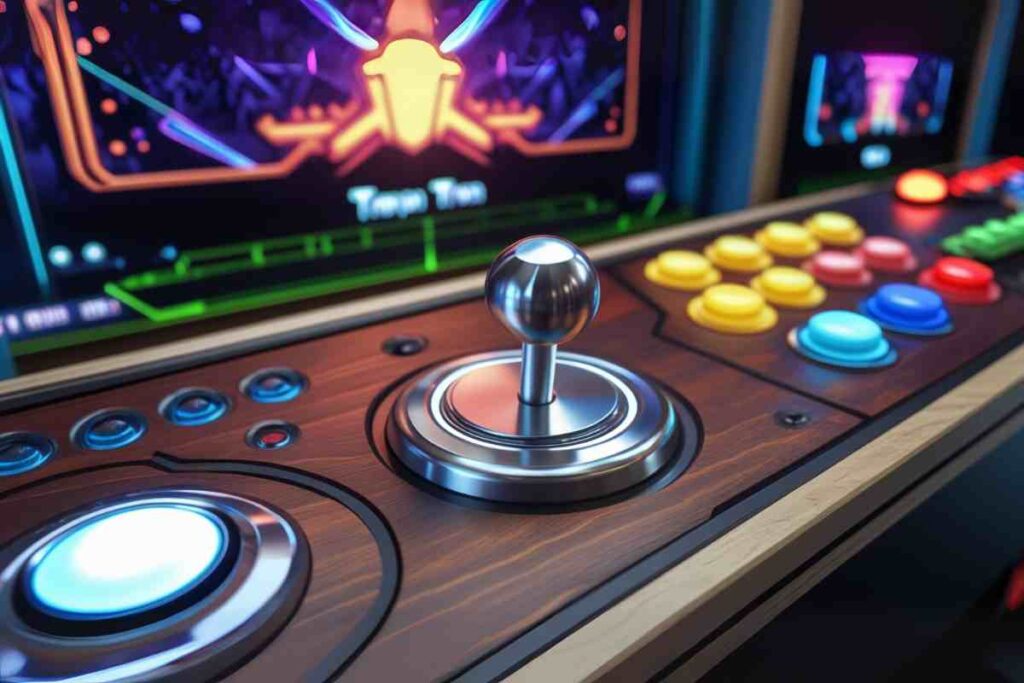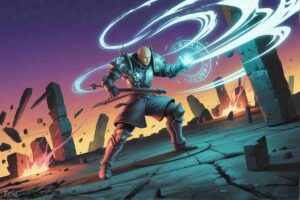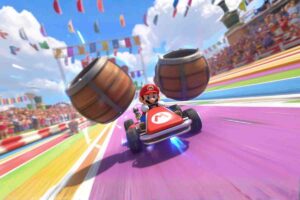Many retro gaming fans dream of recreating the arcade experience at home. The crisp click of a tricker stick and the smooth spin of a dial are more than just controls they’re part of the magic. Combining these two into one arcade multi game controller panel brings the best of multiple game genres into a single setup.
A hybrid design lets you play classics like Tempest, Tron, and Arkanoid while also enjoying modern retro inspired titles. Based on industry updates from home arcade builders, this setup offers unmatched precision and immersion for spinner games, flight style shooters, and more.
Understanding the Core Components
A well designed arcade multi game controller panel spinner and tricker stick setup depends on choosing the right parts. Each element affects how responsive and comfortable your gaming experience will be.
Spinner Controllers – Types, Brands, and Features
A spinner works like a high precision dial, allowing smooth rotational control. Many users report that USB spinners such as the GRS button hole or Ultimarc SpinTrak deliver consistent performance. When selecting a spinner, consider:
- Build quality – Metal housings tend to last longer.
- Interface type – USB models are easier to integrate with emulators.
- Sensitivity adjustment – Crucial for fine-tuning game responsiveness.
Spinners can be built into the panel or mounted externally for modular setups.
Tricker (Trigger) or Flight-Style Joysticks – Ergonomics and Performance
A tricker stick is a joystick with a built-in trigger button, often used for arcade flight and shooting games. It offers quick reaction input and an authentic feel for titles that require precise aiming. Look for:
- Comfortable grip size
- Smooth movement with minimal resistance
- Strong return-to-center springs
Flight-style joysticks are ideal for games like Aztarac, Discs of Tron, and Mad Planets.
Buttons, Trackballs, and Extra Controls – Enhancing Your Panel
While the main focus is the spinner and tricker stick, additional controls can make your panel more versatile. Trackballs are great for games like Golden Tee, while extra buttons can map secondary functions or emulator shortcuts.
Planning Your Arcade Multi Game Controller Panel
Before you start cutting holes or connecting wires, planning is key. A reliable method is to mock up your design using cardboard or software templates. This lets you test spacing and comfort before committing.
Key planning points:
- Panel space – Avoid crowding controls; comfort comes first.
- Component placement – Keep spinner and tricker stick accessible for their respective games.
- Modularity – Some builders create swappable panels to suit different genres.
- Budget vs premium builds – High-end components last longer, but budget parts can still perform well with good setup.
Step-by-Step Build Guide
Follow these steps to create a responsive and durable arcade multi game controller panel with a spinner and tricker stick.
Design and Layout
Sketch your control panel layout. Many users recommend placing the spinner slightly offset from center to avoid wrist strain. The tricker stick should be at a natural reach for your dominant hand.
Select Compatible Components
Choose a USB spinner and tricker stick that work with your emulator setup. Check compatibility with encoder boards like I-Pac or Ultimate I/O if you plan to use multiple devices.
Mount Components
- Drill precise holes for the spinner and tricker stick.
- Use sturdy mounting hardware to prevent movement during gameplay.
- Ensure the panel surface is smooth and free from splinters.
Wiring
A common setup is to connect all devices to a powered USB hub inside the panel. This reduces cable clutter and makes upgrades easier. Use labeled wires for quick troubleshooting.
Emulator Setup and Mapping
In MAME or RetroPie, assign each control to its corresponding in-game function. Spinner sensitivity may need individual adjustment per game for optimal performance.
Calibration and Testing
Many users report better results when testing each control with multiple game types. For example, test the spinner with Arkanoid and Tempest to fine-tune speed, and the tricker stick with Tron to check accuracy.
Real-World Build Examples and Lessons Learned
Builders often share creative variations of this setup:
- Budget Build: A wooden control box with a budget USB spinner and a repurposed flight stick, connected through a basic encoder board.
- Mid-Range Build: Pre-made arcade panel frame, metal spinner housing, and branded tricker stick mounted with ergonomic spacing.
- Premium Build: Custom CNC-cut panel, professional-grade spinner, authentic arcade tricker stick, integrated trackball, and illuminated buttons.
Lessons from these builds show that layout comfort is just as important as component quality.
Troubleshooting and Maintenance
Even the best setups need occasional attention.
Common issues and solutions:
- Spinner lag: Check USB cable quality and reduce emulator input delay settings.
- Tricker stick drift: Tighten the centering mechanism or replace worn springs.
- Button misfires: Clean contacts with electronic-safe cleaner.
A little maintenance goes a long way in keeping your panel responsive.
Pros and Cons of a Hybrid Spinner and Tricker Stick Setup
Pros:
- Authentic feel for multiple arcade game types
- One panel covers many genres
- Highly customizable to your style
Cons:
- Takes up more panel space than single-control designs
- Wiring is more complex with multiple device types
- Calibration can be time-consuming for varied games
Conclusion – Bringing the Arcade Home
An arcade multi game controller panel with a spinner and tricker stick blends nostalgia, precision, and versatility. With the right planning, components, and setup, you can enjoy a home gaming experience that rivals classic arcades. Start small, test your layout, and refine until every control feels natural. Once you have it dialed in, you’ll have a setup that delivers years of authentic, immersive gameplay.
FAQs
What games work best with a spinner and tricker stick combo?
This setup is ideal for classics like Tempest, Tron, Arkanoid, Aztarac, and Discs of Tron. The spinner provides smooth rotation for precision control, while the tricker stick adds quick directional movement with a responsive trigger.
Can I add both a spinner and trackball to one control panel?
Yes. Many users integrate a trackball alongside a spinner and tricker stick. The key is ensuring enough space for comfortable use and using an encoder or hub that supports multiple inputs without lag.
How do I calibrate a USB spinner in MAME or RetroPie?
In the emulator settings, adjust the spinner’s sensitivity until movements feel natural. Calibration may vary between games, so test with multiple titles to find the best all-around setting.
What’s the best spinner for an arcade DIY project?
Popular choices include the GRS button-hole spinner and the Ultimarc SpinTrak. A reliable method is to choose based on build quality, USB compatibility, and adjustable sensitivity.
Do I need an encoder for my spinner setup?
If your spinner is USB-based, it may plug directly into your system. However, when combining multiple controls like a tricker stick and trackball, an encoder such as I-Pac or Ultimate I/O ensures smooth input mapping.





